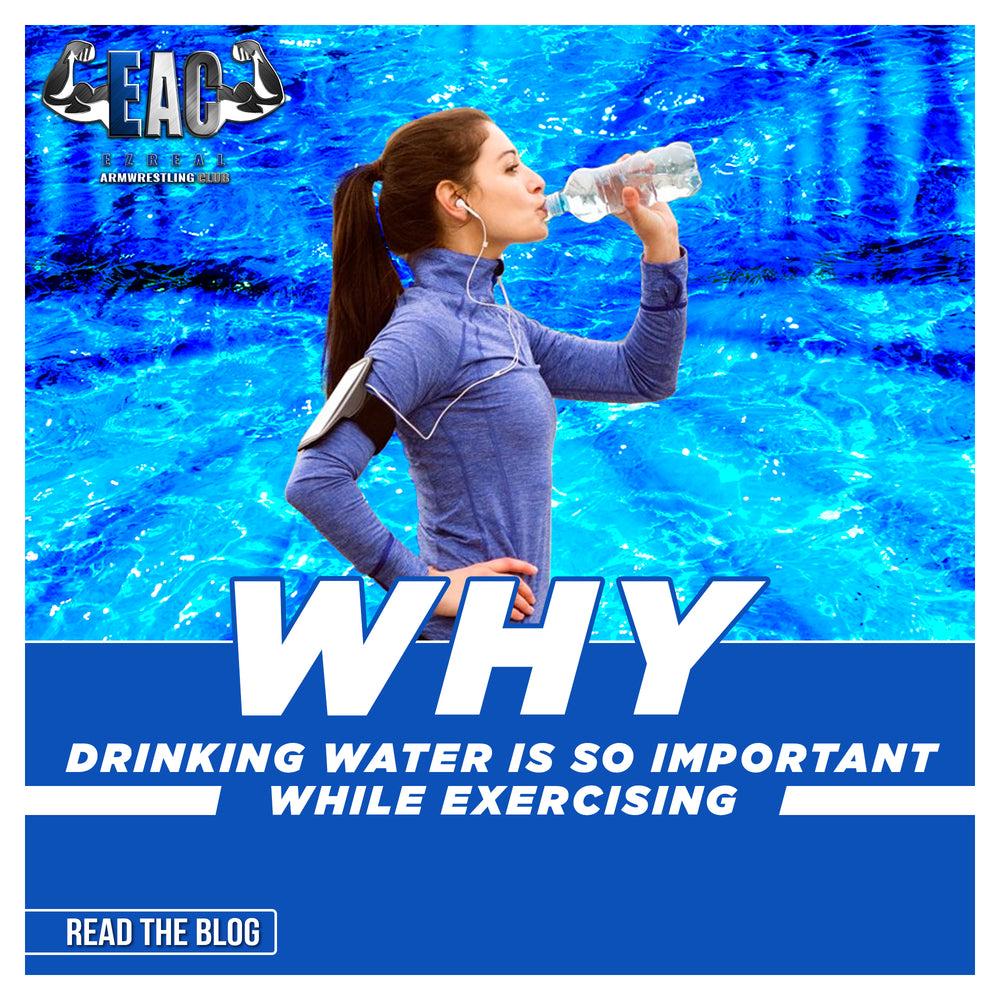
Why Drinking Water is so Important While Exercising
Water's Importance
The main reason we need to drink water while working out is because of the fluids that keep our bodies hydrated; without them, our bodies won’t function at their highest potential.
What can happen if you don't drink enough fluid

- Your body temperature and heart rate may rise. When the total amount of water in your body is below the normal level (hypohydration), your body can’t properly regulate heat.
- You may feel more fatigued than usual.
- You may be unable to think clearly – your motor control, decision-making abilities and concentration may be impaired.
- Your body’s functions may slow down – this includes gastric emptying, so you may feel uncomfortable in your stomach.
- Your performance in sport or exercise may not be as good as it could be. The impact is even worse when you’re active and dehydrated in hot conditions. (Better Health Channel, 2022)
The simple solution to avoid these impacts of dehydration is, of course, to drink enough fluids when you exercise. Make fluid replacement a priority when you’re physically active.
Drinking enough fluids will help to maintain your concentration and performance, increase your endurance, and prevent excessive elevations in heart rate and body temperature. It’s all about sufficient hydration.
What hydration means

The amount of water you need depends on various factors, such as climatic conditions, your health, your clothing, your exercise intensity and duration. So, being well hydrated will differ per person and situation.
As a guide, you probably need more fluid if:
- You sweat heavily
- you have certain medical conditions, such as diabetes or heart disease
- you have cystic fibrosis, which means you have a high concentration of sodium in your sweat
- you are using a medication that can act as a diuretic, causing your body to lose more fluid
- you have a bigger body size
- you are fit (fitter people tend to sweat more and earlier in their exercise)
- you are doing vigorous exercise
- you are active in hot or humid conditions.
Thirst isn’t the best indicator that you need to drink. In fact, if you feel thirsty, you are probably already dehydrated.
A good test of dehydration is the colour of your urine. If it’s pale and clear, it means you’re well hydrated.
The darker it is, the more fluid you need to drink.
Another sign of dehydration is a lack of sweat during vigorous activity when you expect to sweat. (Better Health Channel, 2022)
What dehydration means
Dehydration occurs when your body’s water content is too low. Here are some body signals that indicate you haven’t had enough fluid:
- Headaches
- Fatigue
- Mood changes
- Slow reaction times
- Dry nasal passages
- Dry or cracked lips
- Dark-coloured urine
- Muscle Cramps
- Weakness
- Confusion
- Hallucinations.
If you experience any of these symptoms, you may need to increase your fluid intake.
If you don’t rehydrate, your physical and mental performance will likely be affected. It’s impossible to train your body to handle dehydration, so don’t delay fluid replacement to ‘get used to dehydration’. When you need water, you need it. (Better Health Channel, 2022)
Sweat and dehydration

When you exercise, your body sweats as it tries to return to its optimal temperature. As sweat evaporates from your skin, it removes heat from the body, but you also lose body fluid.
You need to drink fluid during exercise to replace the fluids you lose when you sweat. That way, you’ll reduce the risk of heat stress, maintain normal body function, and maintain performance levels. The general rule is: that if you’re sweating, you must drink fluids.
To work out your sweat rate:
- Empty your bladder
- Weigh yourself in minimal clothing, as close to the start of exercise as possible (this is your initial weight)
- Record the ambient temperature
- Do your exercise session
- Record the volume of any fluid you consume during your exercise session (fluid)
- Estimate (or measure!) urine losses during your exercise session (urine).
- Weigh yourself again at the end of your session in the same clothing as before - be sure to towel off any excess sweat from your body first (this is your final weight)
Remember, this is your sweat rate when exercising at a particular ambient temperature. Your sweat rate will change with the temperature, so it can be useful to measure your sweat rate at different times of the year.
What to drink when exercising

Water is the best drink to satisfy thirst and replace fluid lost during exercise. Drink water before you start exercising, too.
Water boasts a huge list of benefits. It’s natural, free, readily available, contains no kilojoules, and contains fluoride, which is good for your teeth.
About sports drinks
Some athletes use sports drinks that contain electrolytes and carbohydrates, which have concentrations that allow the body to refuel during exercise. Sports drinks may be useful if your activity is moderate to vigorous in intensity for more than 60 minutes. However, sports drinks can be high in sugar, so consume them only if necessary.
Remember that fruit and vegetables contain a high proportion of water, so a fruit snack (such as oranges) can help your fluid replacement.
What not to drink when exercising
Some fluids are not recommended when exercising:
- Avoid cordial, soft drinks or juice. These are usually high in carbohydrates and low in sodium.
- Avoid caffeine, which can be a diuretic (which means it makes you pass more urine and therefore lose more fluid). (Better Health Channel, 2022)


